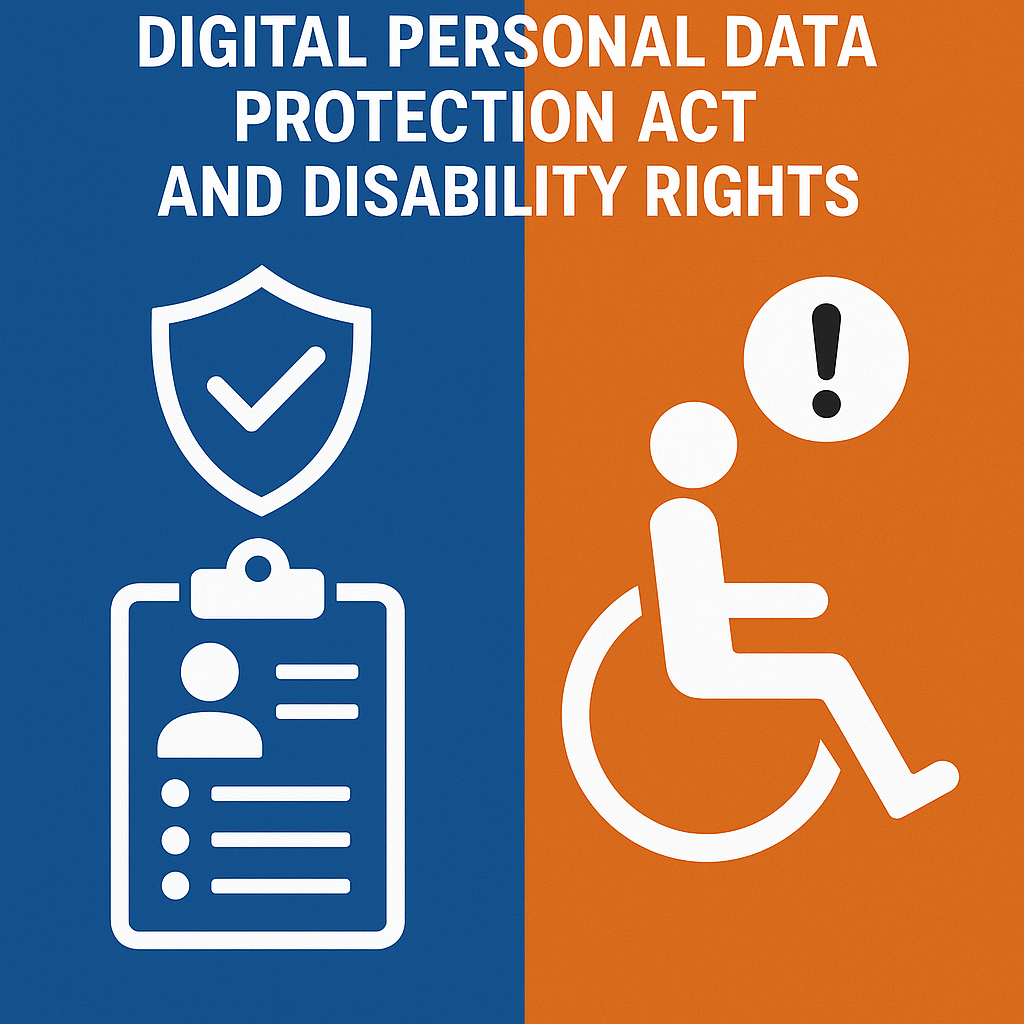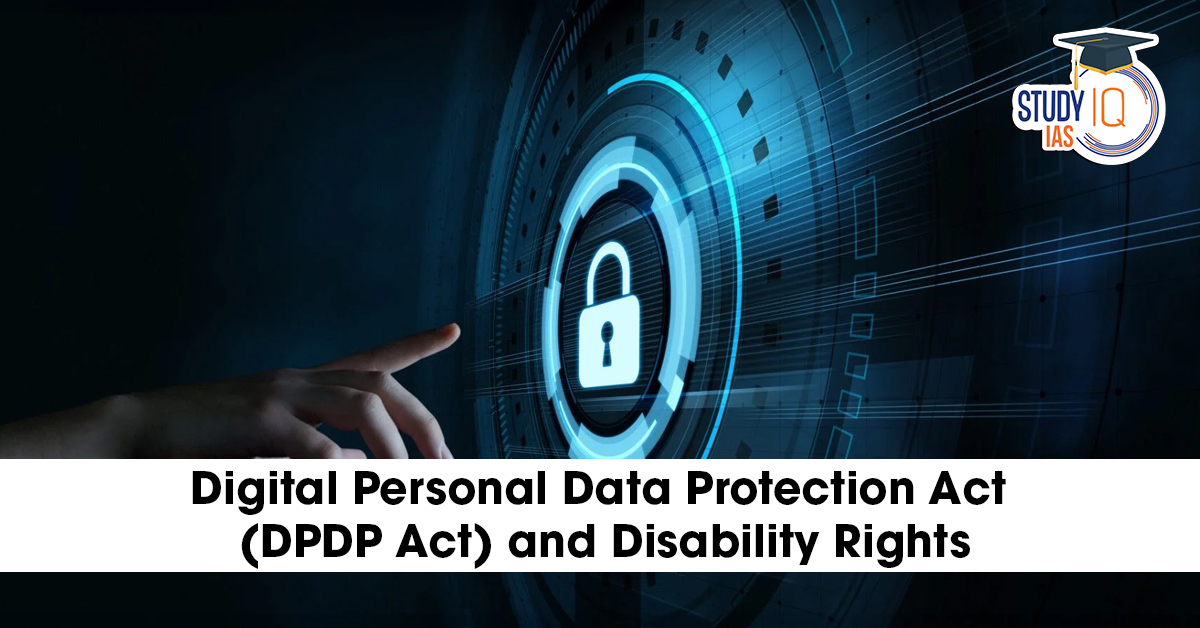Table of Contents
The Digital Personal Data Protection Act, 2023 (DPDP Act) is a significant legislative framework in India designed to govern the handling of digital personal data. Its primary objective is to establish a structured approach to data processing that safeguards individual rights while ensuring that lawful data usage remains feasible.
In recent developments, the Ministry of Electronics and Information Technology (MeitY) has been engaging with the public to gather feedback on the draft rules formulated under this Act. As part of this consultation process, disability rights advocates have voiced concerns about a particular provision within the draft rules. They argue that this specific clause could potentially compromise the autonomy of Persons with Disabilities (PwDs), raising questions about its implications for their rights and independence in the digital sphere.
Digital Personal Data Protection Act and Disability Rights: Key Elements of the Provision
Data fiduciaries are the individuals or organizations responsible for determining how personal data is collected and processed. Essentially, they act as “data processors” with a legal obligation to manage personal data in a responsible manner. The DPDP Act imposes significant duties on these fiduciaries to ensure that the data they handle is processed while respecting user privacy and adhering to legal norms.
Data principals are the individuals whose personal data is being collected or processed. They represent the very people whose online behaviors, digital footprints, and personal information are governed by the Act. The dynamic between data principals and data fiduciaries is crucial for safeguarding privacy rights, as the principals are directly impacted by any misuse or mishandling of their data.
Section 9(1) stipulates that before processing any personal data pertaining to a child or an adult with a disability (PwD) represented by a lawful guardian, data fiduciaries must first secure verifiable consent from the guardian. This requirement provides additional protections for individuals who may not be able to make fully informed decisions on their own due to either age or disability.

What Constitutes “Verifiable Consent”
Consent is not merely a checkbox during the sign-up process; it must be obtained in a way that verifies the guardian’s identity and legal authority concerning the individual (child or PwD). This may involve both digital and traditional methods, robust enough to confirm that the guardian giving consent is legally recognized as having the authority over the individual. The guardian, be it a parent or another legally designated custodian, is tasked with protecting the personal interests of the child or adult PwD. By mandating their consent, the law ensures that those who may be vulnerable receive an additional layer of protection against potential misuse of their personal data.
Importance of This Provision
Protection of Vulnerable Populations
Children and certain adults with disabilities are considered vulnerable in the digital landscape due to their potential inability to fully understand the long-term consequences of personal data handling. This measure aligns with the constitutional right to privacy and various national and international guidelines, ensuring that vulnerable groups are not left exposed to risks without adequate oversight.
Legal and Ethical Considerations
Mandatory guardian consent acts as a safeguard against unauthorized or harmful data processing practices. For data fiduciaries, this necessitates the implementation of stricter consent mechanisms, possibly requiring additional verification tools or protocols. For data principals and their guardians, this provision reinforces the state’s legal commitment to upholding digital autonomy and privacy.
The DPDP Act seeks to create a balance, recognizing the need for efficient and lawful data processing within a digital economy while ensuring that such processing does not compromise individual rights especially of those who are unable to advocate for themselves. Data fiduciaries must, therefore, develop secure and user-friendly systems that can capture this consent without imposing undue burdens on users or detracting from overall user experience.
With the introduction of these detailed mandates, organizations must realign their data management practices. This includes establishing systems to document, audit, and retain records of guardian consent, which could be subject to regulatory review. Non-compliance could result in legal consequences, including fines or other penalties, in addition to reputational harm.
This section of the Act raises important questions about digital autonomy. While such protective measures are essential for preventing exploitation, they require a careful approach. There exists a delicate balance between the need for protection and the risk of infringing upon the digital independence of individuals with disabilities. Future updates to the law may need to navigate these complexities by differentiating between full and partial guardianship scenarios, ensuring that the rights of PwDs are respected within protective frameworks.
The requirement for verifiable guardian consent illustrates a thoughtful approach to data protection. However, it also sparks a broader conversation about inclusivity in digital rights legislation. Key challenges ahead include ensuring that consent processes are straightforward and easily navigable for guardians, empowering them to fulfill their roles without unnecessary obstacles.
Data Privacy and Legal Responsibilities
Activists express concerns over the heavy legal duties imposed on guardians when it comes to granting consent for data processing. This responsibility can create a challenging dynamic, as it inherently positions guardians as the gatekeepers of personal data for the individuals they represent. Critics worry that the obligation could lead to conflicts of interest.
For instance, if a guardian prioritizes their own interests rather than those of the person with a disability (PwD), the privacy and autonomy of the PwD might be compromised. This situation raises important questions about how effectively the rights of PwDs can be safeguarded when decision-making power is concentrated in the hands of another party, even if that guardian is well-intentioned.
Accessibility of Digital Platforms
Despite the establishment of robust legal structures designed to protect personal data, a significant challenge remains: the accessibility of digital platforms. Evaluations have shown that many widely used digital services still fall short in providing sufficient accessibility features for PwDs. This lack of accessible design creates practical barriers for PwDs, making it more difficult for them to actively exercise the rights guaranteed under the DPDP Act. When platforms do not accommodate the diverse needs of PwDs, such as screen reader compatibility or alternative input methods, it not only hampers their ability to access digital content but also undermines the entire framework designed to protect their digital privacy and autonomy.
Both of these issues underscore a broader tension in the pursuit of digital equity. On one side, there is a legal framework aimed at protecting personal data through strict consent protocols, particularly for individuals who may need additional safeguards. On the other, there is an operational reality where digital platforms often fall short of being fully inclusive and accessible. This misalignment suggests that for the DPDP Act to be truly effective, there needs to be a dual approach: rigorous enforcement of legal responsibilities (including clear guidelines for guardians) and parallel efforts to enhance the accessibility and usability of digital platforms for all, including PwDs.


 Ambiguities in India’s Nuclear Liabili...
Ambiguities in India’s Nuclear Liabili...
 Reserved vs General Quota: Supreme Court...
Reserved vs General Quota: Supreme Court...



















